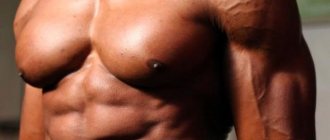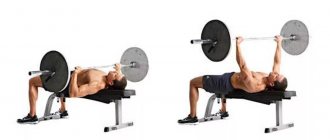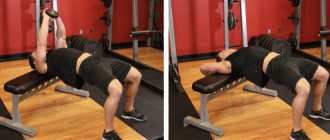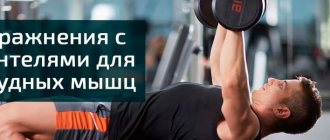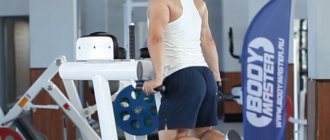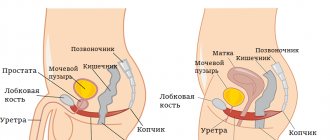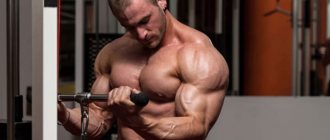Muscle growth | Biceps don't grow | Triceps don't grow | Caviar does not grow | Shoulders don't grow | Breasts don't grow | Back does not grow | Legs don't grow
It takes a little more than a simple bench press to create the powerful chest you dream of. Correct these common training mistakes to train your pecs more effectively every time!
You may think that all that stands between you and your dream body is desire, determination, persistence, or determination. This is what reputable experts can tell you. But perhaps something else is stopping you: all of these training mistakes listed in this material are more likely to leave you disappointed and injured than pumped up and full of optimism.
So let's try to remedy the situation and make adjustments to your favorite training day of the week: chest day! If you read the article “Why Your Biceps Don't Grow: The Top 5 Reasons,” consider this the second half of your muscle-building plan.
Mistake 1: Heavy weights during warm-up
I understand! You can't wait to hit the gym on International Breast Day. The pre-workout complex works to its full potential. You don't want to waste time benching an empty bar or a barbell with a few nickels on it! You want to start with heavy weights... and work your way up to failure.
Pressing too hard as the weight increases will result in poorer performance, meaning you'll likely miss your target number of reps. Warming up to muscle failure can also cause lactate levels to increase, which can negatively impact your workout performance.
Best way: Warm up with light weights and focus on tempo and technique. Then pyramid the weight over 2-4 warm-up sets. Perform only the heaviest working sets of each exercise to failure so as not to undermine your strength.
No load progression
Without progression of the load, there can be no talk of any muscle growth (not only the pectoral muscles, but also all other muscle groups)!!! IF there is no PROGRESSION OF LOAD, then there is NO POINT for muscles to GROW! FINALLY UNDERSTAND THIS!!!
Load progression can be achieved in various ways:
- Increase weights on the apparatus (increase weights)
- Increase the number of repetitions per set
- Increase the number of approaches
- Reduce rest between sets
FOR A BEGINNER (and even more advanced ones) it will be enough to stick to at least 1 method. Those. Constantly increase working weights from workout to workout.
However, in my opinion, it is much more effective to combine the 1st and 2nd methods into one. Those. From training to training, increase both the working weights and the number of repetitions.
For more information about all this, read the main articles:
- Bodybuilding training programs (here at the very beginning it tells STEP BY STEP and CHEWED how to use safe methods of progression i.e. increasing weights and repetitions, THIS IS A MUST READ).
- German volumetric training (here we talk again about the same safe methods, but also about an unsafe method of load progression, for professionals).
- Natural bodybuilding muscles without steroids (it tells in principle why progression is needed, how to carry it out, etc., but not as detailed as in the first and second articles).
A MUST READ! Don't be lazy, THE GROWTH OF YOUR MUSCLES DEPENDS ON THIS!!!!!!
Mistake 2: Turning a fly into a press
The most common—and best—way to train your chest is to start with multi-joint movements such as presses. Then move on to isolation exercises, such as crossovers or flyes.
However, there is one big “but” here. To make the exercise truly isolation, your elbows should remain in a fixed, slightly bent position. Flexing them too much—usually when using heavy weights—will turn the movement into a press.
Why is this a problem? You've already done bench presses. The benefits of the fly are different: a different stretch, muscle contraction and a great finishing pump.
Best way: Do low-impact crossover flyes and crossovers and focus on technique. During the eccentric (lowering) phase, spread your arms wide to the sides, stretching the pectoral muscles. “If you're having trouble getting proper technique, use a pec-deck machine to lock your arms into the correct position.
Incorrect exercise technique
This is the second most common reason. For those who are not aware (do not know), without the correct technique, all your efforts in the gym or at home (depending on where you train) are directed only to one place... to your ASS!!!!
It is very important to learn how to perform the exercises you need correctly. I also fell for this trick, I studied for 3 years, I thought everything was normal, but then I had to retrain myself. I did something wrong, my pectoral muscles also did not grow at all. Because the triceps and deltoids took the load on themselves, stealing from the pectoral muscles. I had to retrain myself. Change everything completely. And it was damn hard. But these are necessary measures. Most likely, you will have to go through this too.
Ideally, of course, from the very beginning of your journey, learn this (so that you don’t have to later, like with me). But, as practice shows, this (without a competent mentor) is impossible to achieve.
In general, in this subparagraph of today’s article, I wanted to convey to you that you must learn how to perfectly correctly perform this or that exercise (in our case, for the pectoral muscles), so that when you perform it, you work only the CHEST MUSCLE, without triceps and front deltas (which steal the load from the pectoral muscles, thereby preventing them from growing).
You might find this article useful: “EXERCISES FOR CHEST MUSCLES.”
Mistake 3: Bench incline too steep
Old-school bodybuilding wisdom says that the steeper the incline of the bench, the more load the front deltoids take on. A recent study confirms this theory, and then takes it to the next level: anything above 45 degrees is essentially a shoulder exercise, and 30 degrees is the optimal angle for working the upper chest.
If you're only benching at a 45-degree angle—perhaps because your gym only has a bench set at that angle—it's time to change things up.
Best method: Either press at a 30-degree angle or use multiple inclines. An excellent option would be to work on an adjustable bench when training the upper pectoral muscles. Start with the bench incline at 45 degrees, then adjust it to 30 degrees and finish at a slight incline of about 15 degrees.
An effective workout for developing powerful chest muscles
Push-ups with elastic band
Execution technique
- Keep your body straight. The neck, back and hips are located in one line. Feet together.
- Distribute the load over the entire surface of the palms and fingers.
- Elbows slightly pressed to the body.
- Slowly lower to a 90° angle at the elbows.
- Exhale powerfully as you rise to the top point.
- Do not straighten your elbows completely.
We perform three approaches 15 times. Rest between sets is a minute.
Bench press on a horizontal bench
Execution technique
- We press our shoulder blades against the bench.
- Place your feet on the floor, pressing your foot tightly.
- Take the barbell slightly wider than your shoulders so that it is above your collarbones.
- Slowly, as you inhale, lower the barbell to the middle of your chest, bringing your shoulder blades together.
- Exhale powerfully as you rise to the top point.
We perform three approaches 8-12 times. Rest between sets is a minute.
Photo: istockphoto.com
Bench press at 30° angle
Execution technique
- We press our shoulder blades against the bench.
- Place your feet on the floor, pressing your foot tightly.
- Take the barbell wider than your shoulders so that it is above your collarbones.
- Slowly, while inhaling, lower the barbell to the upper chest, above the nipples, bringing the shoulder blades together.
- Exhale powerfully as you rise to the top point.
We perform three approaches 8-12 times. Rest between sets is a minute.
Push-ups
Execution technique
- We firmly grasp the bars, the body should be level. The neck, back and hips are located in one line. Feet together.
- Slowly lower yourself to a 90° angle at your elbows and lean forward slightly. Elbows point out to the sides.
- Exhale powerfully as you rise to the top point. Do not straighten your elbows completely.
We perform three approaches 10 times. Rest between sets is a minute.
Photo: unsplash.com/@johnfo
Dumbbell raises and raises
Execution technique
- We press our shoulder blades against the bench.
- Place your feet on the floor, pressing your foot tightly.
- Raise the dumbbells up so that they are located above the chest.
- Slowly, while inhaling, lower the dumbbells with your arms slightly bent at the elbows.
- The elbow should not fall below the shoulder.
- Exhale powerfully and bring the dumbbells together at the top point.
We perform three approaches 8-12 times. Rest between sets is a minute.
These tips will help you build developed chest muscles and achieve high strength results.
Mistake 4: Too many sets to failure
You want big breasts so badly that you will simply try your best to achieve it. More approaches. More weight. More sets to failure. More intense techniques that force you to overcome failure.
While training to failure signals muscle anabolism, too many series to failure does the opposite and ultimately suppresses important growth factors. Training volume and intensity are two critical factors for growth, but getting the balance right is a matter of fine tuning.
Best Method: Experienced lifters can perform the heaviest 1-2 sets of each exercise to failure or more. Beginners can achieve best results by performing only basic exercises, such as the bench press, to failure. As a general rule, the more sets you perform to failure, the more you should reduce your training volume by performing fewer sets or exercises.
COMBO (reasons No. 1 and No. 2 are very often INTERRELATED).
Very often, people, in pursuit of weight (load progression), violate the technique of performing one or another exercise. It is unacceptable! Remember and never fall for this mistake.
It is ABSOLUTELY NECESSARY to progress the load (increase the weights on the apparatus) (because without it there will be no muscle growth), but this should not be done using WORSE TECHNIQUE. Otherwise the meaning is lost. Do you understand? Technology ABOVE EVERYTHING!!! If you progress the load, but do the exercises, roughly speaking, through the butt, then the result will be the same.
I also recommend that you read the article: “How to determine the working weight in an exercise?”
Mistake 5: Always Start with the Bench Press
The bench press has a special aura that is unlike any other exercise. It is logical that it should become your “main dish” on breast day.
The only problem: Even the perfect bench press—or any other exercise—starts to produce less return over time. As you become a more experienced lifter, your chest workouts will become less productive over time unless you make changes. It's not just about you, it's a natural development.
The best way: change your “main movement” periodically. Press dumbbells, not barbells. Or start with an incline or reverse bench instead of a flat bench. By doing these exercises first, you'll likely be able to bench press more weight or do more reps, giving your upper and lower pecs more stimulation than they're used to.
Firstly
Check your starting position, and it doesn’t matter in which chest exercise - the mistake will be common for everyone. There are two things you need to pay attention to here, that is, before you even start doing the exercise. And one more trick that you will need to remember during each repetition and it will show that you are doing everything correctly - I say: chest forward, trapezius down.
We recommend reading: Wide-grip lat pull-down
What does it mean:
- You need to position your chest so that it starts the press itself. This occurs when the chest protrudes in front of the shoulders. No matter what exercise you do, if your shoulders are in front of your chest, you will most likely not give the pectoral muscles the opportunity to initiate the contraction in this movement. In this position, the shoulder is the first to work. And this situation can be seen in many chest exercises, since the shoulders, triceps and pectoral muscles like to work together. You need to try to initiate the contraction from the chest and not let your shoulder take the load.
- Now about the trapezoid down. The whole problem here is posture due to the fact that we spend a lot of time sitting, constantly in a twisted position. This all causes the trapezius to do extra work and contract when raising the arm up. You can test yourself - raise your hand up in front of you and look in the mirror. You'll likely find yourself doing something that looks like a shrug when in reality it shouldn't be. The trapezius should be in a relaxed state. If you deliberately relax it, this will ultimately allow you to better bring your arm to your body, press it, and therefore create a greater contraction in the chest.
We'll talk more about this soon. In the meantime, remember - you need to put your chest forward, lower your trapezius down. During each repetition, you can try to specifically pull the trapezius down, at the lowest point of the amplitude.
Same thing with bench presses. Don't just fall down, don't just relax and let the dumbbells fall down on you. Look, I'm pulling the dumbbells myself, thus opening my chest more, putting these muscles in the right position for a better contraction in the next repetition.
The combination of this kind of preparation at the beginning and proper work within the set can work wonders on every chest exercise you perform!
We recommend reading: Wrist body type
